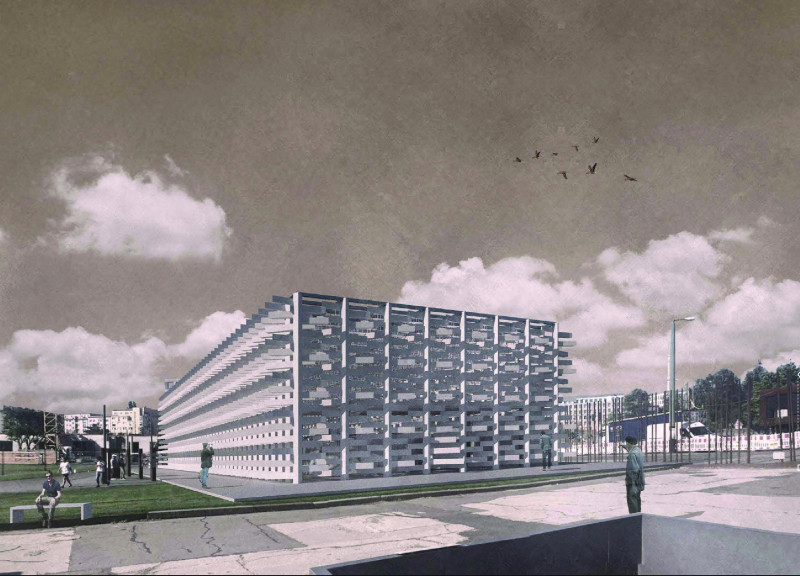5 key facts about this project
This project represents a unique intersection of architecture and history, emphasizing the importance of collective memory and human connection. The pavilion's design encourages visitors to engage with each other and the environment, thereby deepening their understanding of the past and its impact on the present. The ambition is to promote a sense of community and shared experiences, making this space relevant to both local residents and visitors.
The Pavilion of Perspectives incorporates several notable design features. Its façade is composed of perforated panels that create a visually engaging exterior while allowing natural light to filter through the interior spaces. This design choice enhances the connection between the indoor and outdoor environments, blurring the boundaries and inviting continuous interaction with the surrounding landscape.
A key aspect of the project is its thoughtful materiality. The use of concrete provides structural support and durability, while the inclusion of glass fosters transparency and openness. Steel serves as a lightweight, robust framework, and wood is used internally to add warmth and comfort. The combination of these materials not only meets functional requirements but also contributes to the pavilion's overall aesthetic.
The pavilion's layout promotes fluid movement and accessibility, with an open floor plan that facilitates interaction among visitors. Dedicated areas within the building accommodate various functions, allowing for adaptability in different contexts. Viewing platforms and interactive installations engage users on multiple levels, helping them to relate their experiences with the historical context of the Berlin Wall.
The Pavilion of Perspectives distinguishes itself through its unique approach to community engagement and architectural interaction. The design emphasizes adaptability, encouraging the space to transform based on the activities and gatherings it hosts. This level of flexibility is increasingly important in contemporary architecture, where multifunctional spaces are sought after.
This project also aligns with sustainable design principles. By maximizing natural light and using energy-efficient materials, it reduces its environmental footprint while enhancing visitor experiences. The pavilion serves as both a memorial and a forward-looking space that resonates with contemporary social dynamics.
For those interested in a deeper understanding of the Pavilion of Perspectives, exploring architectural plans, architectural sections, and other architectural designs will provide valuable insight into the project's intricate details and design strategies. Delve into the presentation of this project to appreciate its contribution to architectural ideas and community engagement in urban settings.























